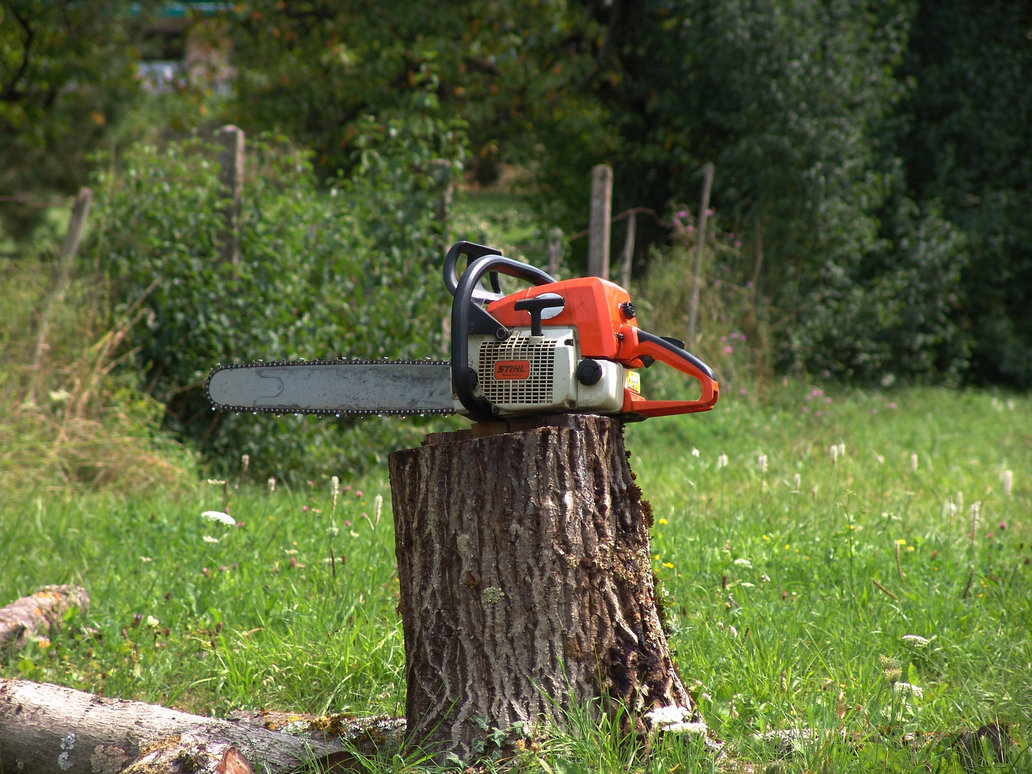Tree removal is a serious undertaking, even for experienced professionals like our team here at Case Mountain Tree Service. Although we always recommend using a qualified and professional tree service for the removal of trees, we realize that this may not always be possible. If you plan on attempting this kind of DIY removal, follow these tips we’ve put together on tree removal safety to protect yourself and get the job done safely.
- Gear up
A hard hat, safety glasses, and heavy gloves will help to protect you from potentially deadly falls, flying debris, stings, bites, cuts, and even electrocution. Ear protection and safety chaps (usually made of Kevlar) are important if you’re planning to operate a chainsaw. These types of chaps will stop a blade immediately if you accidentally drop the bar against your leg, preventing some really serious injuries. As you would with any other heavy-duty outdoor job, be sure to wear long sleeves and slip-resistant shoes.
- Check power lines
Don’t get close to a live wire! Did you know that you don’t even have to touch a live wire to get hurt? Even touching a branch that’s touching a wire can cause a fatal injury. If the tree you’re considering removing is within 10 feet of a power line, don’t even attempt any work on it. Instead, call the electric company. They’ll usually send someone to help insulate or turn off the line during the tree removal process.
- Stay on solid ground
Don’t attempt any removal job unless it allows you to keep both feet firmly on the ground. It’s easy to get into big trouble quickly when an untrained person tries to remove big trees from a ladder. This is a case where your safest option is to call in a professional instead!
- Protect others
Estimate the “falling zone” around the tree, and then mark off that space appropriately. This will protect you, your work partner, family members, pets, and even passing pedestrians. Trees are often taller and can reach further to the ground than you might imagine.
You can estimate where a tree will land by using what we call the “ax handle trick.” Hold an ax handle at arm’s length, close one eye, and retreat from or move toward the tree until the top of the ax is even with the treetop and the bottom is even with the base. Your feet should then be close to where the treetop will rest after falling. Always give your felling zone estimate extra room. Estimates are only estimates, after all, and falling branches can easily injure or even kill.
- Work with a partner
It’s always safer for you to work with a partner. Have a trusted person stand several feet behind you and closely monitor the top of the tree for falling branches. This person can also let you know when the tree starts to fall. Preferably, you and your partner should be trained in CPR and first aid, just in case of an emergency.
- Be smart and be prepared
Educate yourself on the weather, the equipment, the tree and your surroundings before firing up the chainsaw. Learn how to use your ax or chainsaw to cut notches and take off branches in an organized way. Inspect the tree and limbs for cracks and damage before you begin any work on it. If there are things in the felling zone that you don’t feel comfortable risking, skip the DIY attempt and call in a certified professional like Case Mountain Tree Service.
